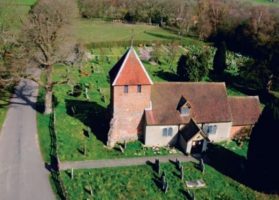Family
Frederick Nash was born on 31 August 1886 at Bishopswood, Tadley.
His parents were Thomas and Esther Nash (née Giles). Thomas was a ‘General Labourer’.
Frederick was one of 13 children: Henry Thomas, Emily Etta, Amelia Ann(ie), Caroline Rachel, Elizabeth Emma, David Edward, Arthur George, Robert William, William ‘Will’, Frederick, Albert, Alma, Dorothy May.
When Frederick left school in 1900 he went to work for George Mitchell who farmed at ‘Burrell’s Farm’, Tadley. When George and Sarah Mitchell moved to Wiltshire, Frederick went with them. After this move there was no regular family contact.
In the 1901 Census he and the Mitchell family were living at ‘Shaw Farm’, Chute, Wiltshire. On the census return he was recorded as ‘a servant’ of George Mitchell. His occupation was listed as ‘Cattle Boy’.
At the end of 1903, aged 17 years, Frederick married Amy Maria Mitchell, the younger daughter of his employer.
The 1911 Census shows that he and his wife lived at Little Salisbury, Wiltshire. His occupation was then listed as ‘Gamekeeper’. It records they had five children, two of whom had died; the surviving children were George, Winifred and Stanley.
Service record
Frederick enlisted in Reading, probably towards the end of 1915, and achieved the rank of sergeant in the 2/4th Battalion of the Princess Charlotte of Wales’s (Royal Berkshire Regiment) (service number 203098).
The 2/4th Battalion, Royal Berkshire Regiment was established in September 1914 to accommodate territorials who had not signed for overseas duties plus the large number of new recruits who were flocking to enlist. After training in Buckinghamshire it joined 184th Brigade and was based in the United Kingdom until it sailed to France in May 1916. Its first action was a raid at Ferme du Bois (13 July), close to the Belgian border. It moved south to the Somme on 19 November but took almost no part in the battle.
Their next action was at Bihecourt-Pine Copse on 2 April 1917 and the summer was spent on training and trench duties. On the 22 August, and for the next three months, it fought in the Third Battle of Ypres [Passchendaele] (31 July – 10 November 1917), before moving back south to take part in the Battle of Cambrai on 27 November 1917.
The battalion was part of the resistance to the German Spring Offensive (21 March – 18 July 1918), where it fought a valiant retreat until it was withdrawn on 30 March. In May the battalion was back in action at Robceq, Pas-de-Calais. On 11 May Frederick was a member of a night listening patrol. The battalion War Diary suggests the patrol lost its direction in the dark and walked into the enemy lines. Frederick was believed to have been wounded that night and lingered until 19 May when he died. Another local man, Ernest Sims (a rake maker from Pamber), was with him as he lay dying. Ernest later told Frederick’s family that together they sang a hymn ‘There is a land that is fairer than day’.
His younger brother Albert served in the same regiment and survived the war.
Died
Frederick died of wounds on Sunday 19 May 1918, aged 31.
Commemorated
He was buried at Aire Communal Cemetery [III A 18], St Omer, France
When Tadley War Memorial was erected in 1929, Frederick’s name was not included. At his family’s request his name was added in 2011. A Service of Dedication at St Paul’s Church, Tadley followed on 24 July 2011.
He is also remembered on the Faringdon War Memorial, in All Saints Church, Faringdon and St Mary’s Church, Little Coxwell, Oxfordshire.
Decorations
Frederick was awarded the Victory medal and the British War medal. These would have been sent to his wife.

